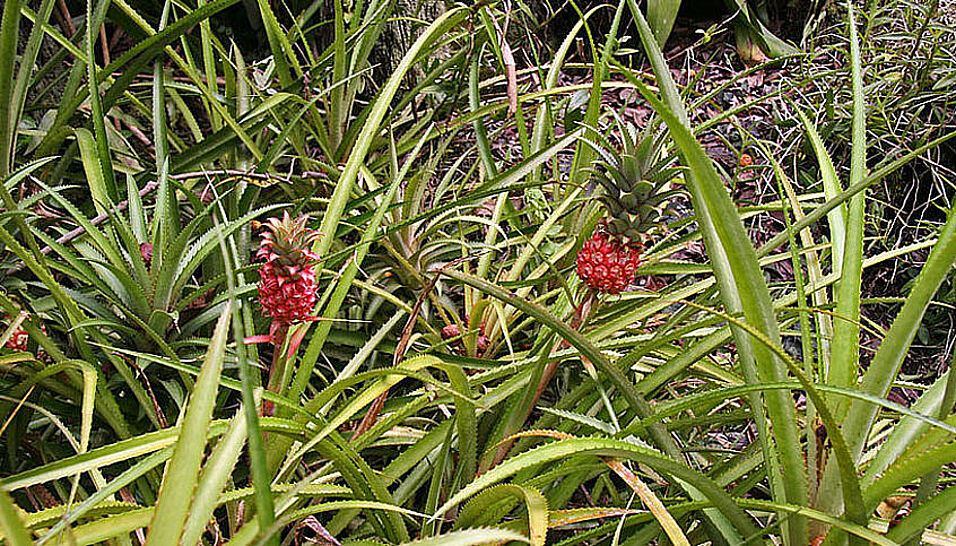As their Latin name indicates, pineapples are truly "excellent fruits" - and thanks to a freshly completed genome sequencing project, researchers have gained a new understanding of how human agriculture has shaped the evolution of this and other crops. Pineapples are a little bit exotic yet pleasingly familiar; large, spiky fruits with sweet, juicy yellow flesh. The newly sequenced variety of this study, Ananas comosus var. bracteatus, is different from this standard grocery store variety. It produces a small fruit that is not suitable for consumption and is grown in gardens for decoration or to form a security hedge. Unlike many cultivars of pineapple, it is able to self-pollinate. The researchers sequenced and assembled the red pineapple genome, using the genome of previously sequenced fruit pineapple as a reference and comparator. They also re-sequenced the genomes of 89 pineapple accessions (samples of plant tissue) from multiple cultivars. By comparing similarities and differences in DNA sequence across different types of pineapple, they were able to trace how natural and artificial selection shaped key traits and established distinct varieties.* [read more]
The bracteatus pineapple genome and domestication of clonally propagated crops
Li-Yu Chen et.al, Nature Genetics 2019, www.nature.com/articles/s41588-019-0506-8
*(c) Science Daily

